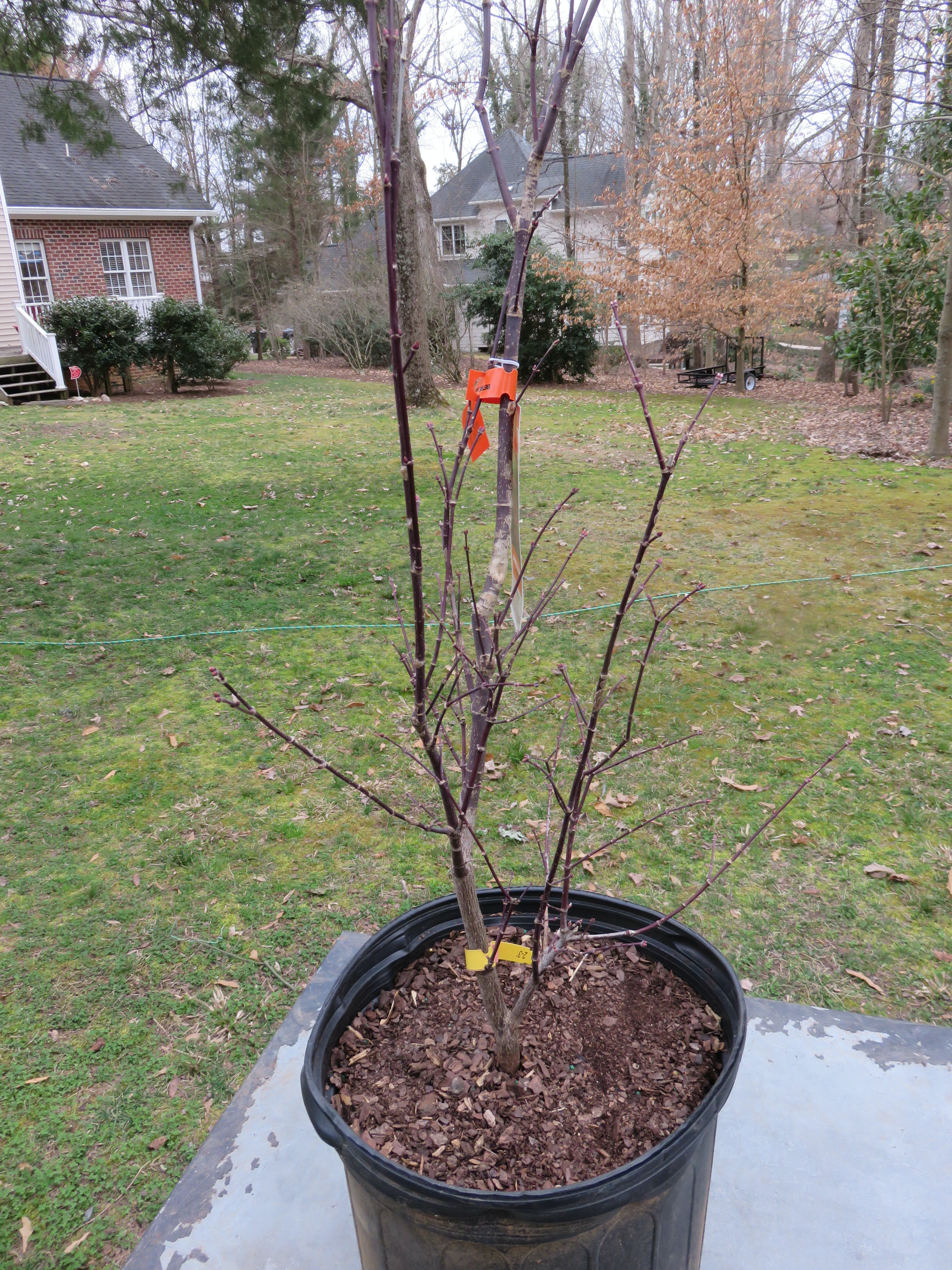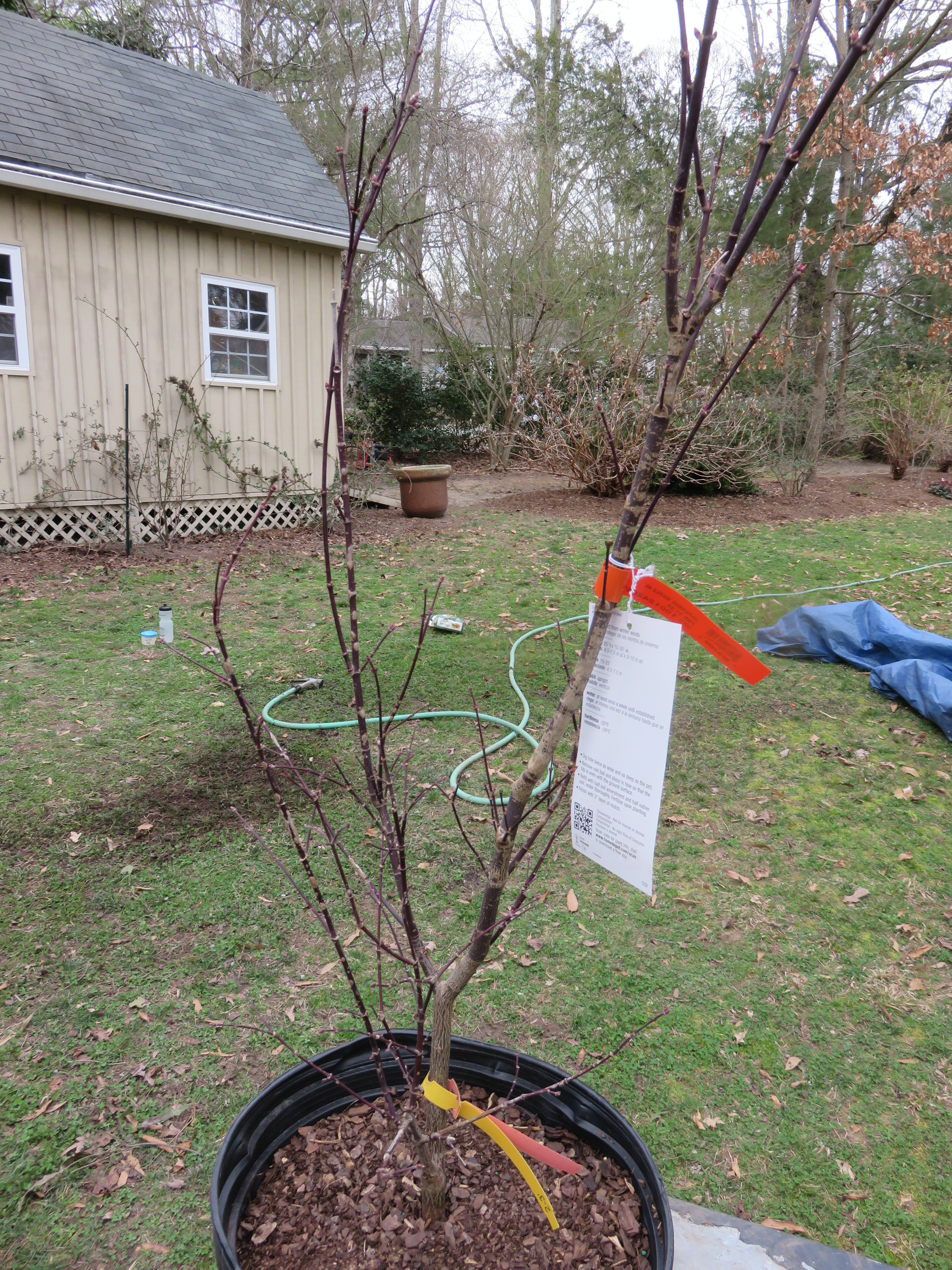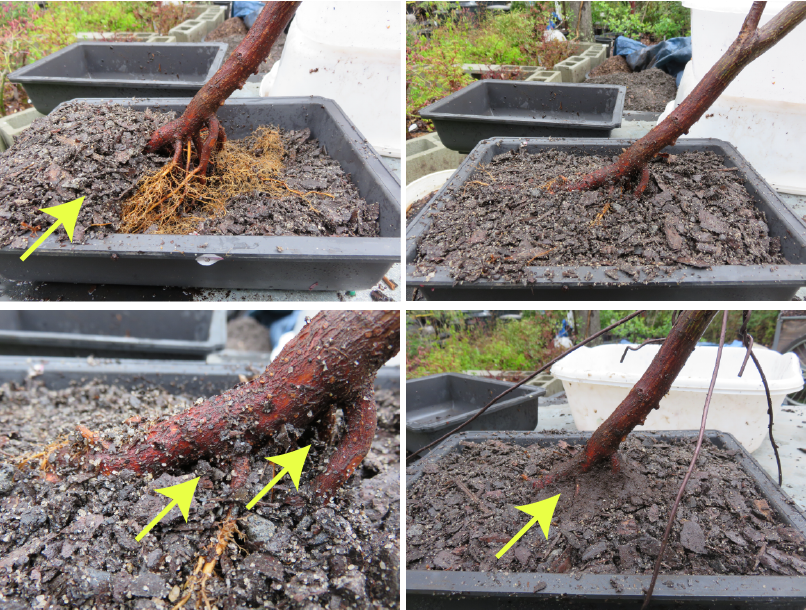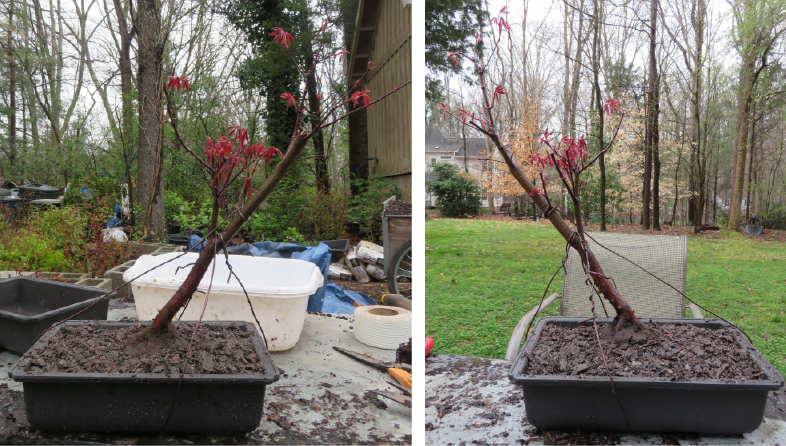Chapter 41 Journal Tree 1: A Japanese Maple
I said before that the best style for a tree often is determined by its roots. While it is possible to force a treeʼs roots into a different form, it is time-consuming and not always successful. It is simpler to find a style that best suits the existing roots, then develop branches to match. This tree is a great example of that problem.
I bought this Japanese maple (Acer palmatum ‘Atropurpureum’) for $40 in a local garden center. It seemed like it would be a fun and quick spring project. I chose it because it had a large number of branches coming off very low on the main trunk. Also, when I pushed the nursery mix back, it clearly had larger roots that could be developed into nebari. When I unpotted it, it turned out to be a great example of how roots can fool you, yet also help you decide the best style for a tree.
41.1 Mid-March, 2021

This maple seemed like a good candidate for an informal upright or sparse broom style. With that in mind I top-pruned most of the growth so the tree would be easier to handle while repotting. In hindsight, that was a minor mistake that I will have to deal with later. Original photo by Dan Johnson.


One side, before and after pruning. Original photo by Dan Johnson.


Second side, before and after pruning. Original photo by Dan Johnson.


Third point of view, before and after pruning. Original photo by Dan Johnson.
41.1.1 The “Uh-Oh Moment”
This is the same red-leaf Japanese maple with the nursery mix removed to expose the roots.
 There are ample roots, but they do not radiate equally from all sides. When I stand the tree in a training pot, it is clear that I will have to remove a LOT of roots if I plan to grow this tree in a traditional vertical style. Original photo by Dan Johnson.
There are ample roots, but they do not radiate equally from all sides. When I stand the tree in a training pot, it is clear that I will have to remove a LOT of roots if I plan to grow this tree in a traditional vertical style. Original photo by Dan Johnson.
What originally I thought would be a good candidate for a quick informal upright or sparse broom style project now needs to be re-evaluated.
One option would be to prune the existing roots hard, treat the bare side with rooting hormone, and put the tree in a small bag pot to develop roots on the thin side. That will add 1-3 years of pre-training to this tree.
Another option is to plant this maple in a slanted style, turning the side of the trunk with few roots into part of the nebari. While this was not what I intended when I purchased the tree, it looks to be a good choice for this particular tree. It also means I can go ahead and plant the tree and start training it rather than waiting for new roots.

The uncompressed root mass of this tree almost completely fills the training pot, but there is ample space between the root branches for soil, and I need to remove many fewer roots. Original photo by Dan Johnson.

Top left: when planting trees on an angle, it helps to bury the roots on one side in soil to keep the tree from tipping over while working on the other side, and keep the roots from drying out. I’ve also seen some people put a piece of slate or tile on top of the roots to hold them down and keep them shaded while working on the other half of the pot. Top right: once the roots on the right side of this tree were settled in, I went back and uncovered the roots on the right, filling in the gaps with soil. Bottom left: even after filling in the spaces between the roots, potential void spaces could form just beneath the nebari (arrows). Bottom right: to encourage additional roots (which can fill out the existing root mass, I packed the spaces beneath the main root branches with muck soil. If new roots do not emerge, I may need to plant the tree slightly slower in the pot to minimize the visual gap, or place a small pointed stone in the space to improve its appearance. Original photo by Dan Johnson.
 The maple has been planted and wired in place to prevent the tree from being knocked or blown out while the roots re-establish themselves. The bracing wire will come off by mid-summer. I had already removed enough top growth to offset what I removed from the roots. Original photo by Dan Johnson.
The maple has been planted and wired in place to prevent the tree from being knocked or blown out while the roots re-establish themselves. The bracing wire will come off by mid-summer. I had already removed enough top growth to offset what I removed from the roots. Original photo by Dan Johnson.
41.1.2 Next Steps
I will need to rethink the top branches once they begin growing out, but it is much easier to develop new branches to suit a slanting style than to completely reorganize the root mass.
In hindsight I admit I should have waited to prune the top until I saw the roots, but one of the reasons I like Japanese maples is they back bud profusely. I am confident that I can build new branches where I need them.
Until I see how the canopy and branches grow out, there is not much more I can do on this tree. I need to wait 1-2 seasons and see what develops.